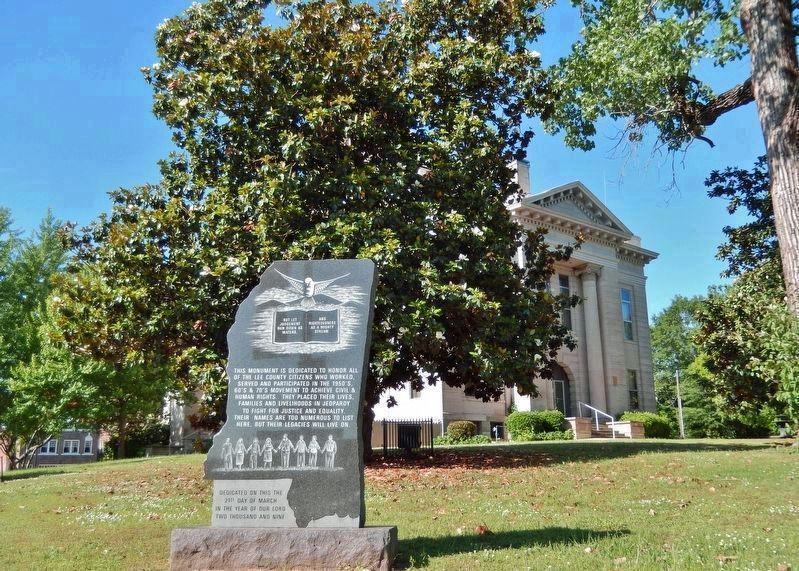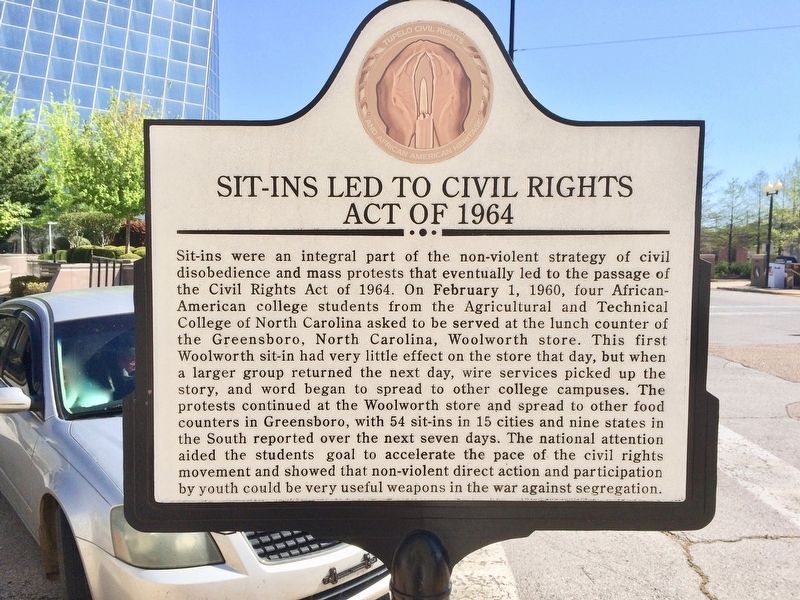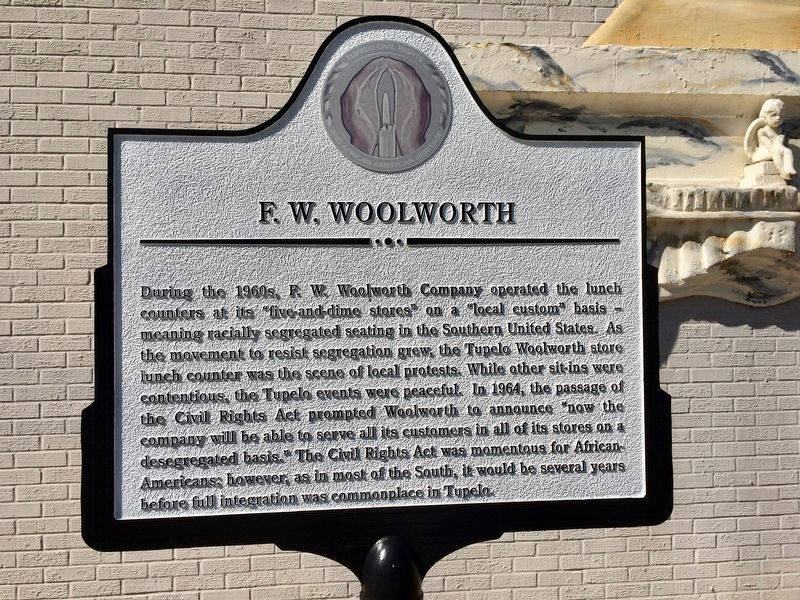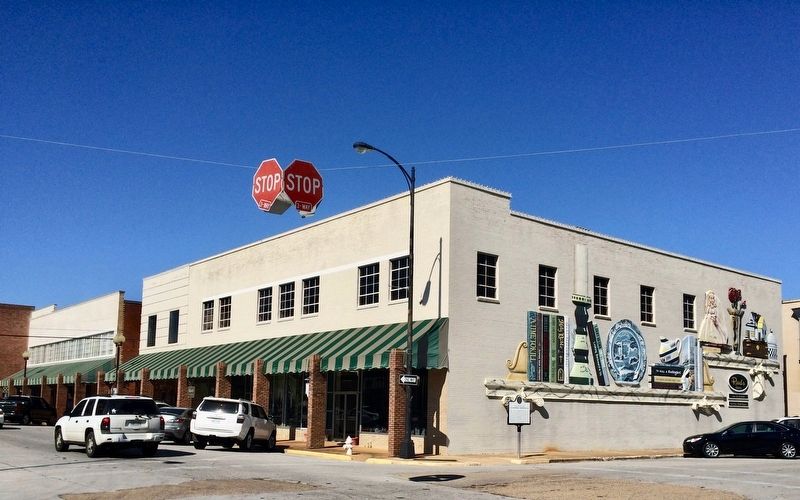Tupelo in Lee County, Mississippi — The American South (East South Central)
Sit-Ins Led to Civil Rights Act of 1964 / F.W. Woolworth
During the 1960s, F. W. Woolworth Company operated lunch counters at its "five-and-dime stores" on a "local custom" basis - meaning racially segregated seating in the Southern United States. As the movement to resist segregation grew, the Tupelo Woolworth store lunch Counter was the scene of local protests. While other sit-ins were contentious, the Tupelo events were peaceful. In 1964, the passage of the Civil Rights Act prompted Woolworth to announce "now the company will be able to serve all its customers in all of its stores on a desegregated basis." The Civil Rights Act was momentous for African-Americans; however as in most of the South, it would be several years before full integration was commonplace in Tupelo.
Sit-ins were an integral part of the non-violent strategy of civil disobedience and mass protests that eventually led to the passage of the Civil Rights Act of 1964. On February 1, 1960, four African-American college students from the Agricultural and Technical College of North Carolina asked to be served at the lunch counter of the Greensboro, North Carolina, Woolworth store. This first Woolworth sit-in had very little effect on the store that day, but when a larger group returned the next day, wire services picked up the story, and word began to spread to other college campuses. The protests continued at the Woolworth store and spread to other food counters in Greensboro, with 54 sit-ins in 15 cities and nine states in the South reported over the next seven days. The national attention aided the students goal to accelerate the pace of the civil rights movement and showed that non-violent direct action and participation by youth could be very useful weapons in the war against segregation.
Erected 2013 by the Tupelo Convention and Visitors Bureau.
Topics. This historical marker is listed in these topic lists: African Americans • Civil Rights • Education. A significant historical year for this entry is 1964.
Location. 34° 15.402′ N, 88° 42.257′ W. Marker is in Tupelo, Mississippi, in Lee County. Marker is at the intersection of South Spring Street and Troy Street, on the right when traveling north on South Spring Street. Touch for map. Marker is at or near this postal address: 111 South Spring Street, Tupelo MS 38804, United States of America. Touch for directions.
Other nearby markers. At least 8 other markers are within walking distance of this marker. The Iron Furnace / Front Street (about 300 feet away, measured in a direct line); Tupelo Hardware (about 400 feet away); Lee County, Mississippi War Memorial (about 600 feet away); Tupelo Woman's Christian Temperance Union (about 600 feet away); Tupelo Confederate Soldiers Monument (about 700 feet away); Lyric Theatre (about 700 feet away); The Lyric Theater (about 700 feet away); Lee County Courthouse (about 700 feet away). Touch for a list and map of all markers in Tupelo.
More about this marker. The initial marker for the Civil Rights & African American Heritage trail, part of the Heritage Trails Enrichment Program.

Photographed By Cosmos Mariner, May 13, 2015
5. Lee County Civil Rights Monument
(located at northeast corner of nearby former courthouse)
(located at northeast corner of nearby former courthouse)
But let judgement run down as waters, and righteousness as a mighty stream.
This monument is dedicated to honor all of the Lee County citizens who worked, served and participated in the 1950’s, 60’s and 70’s movement to achieve civil and human rights. They placed their lives, families and livelihoods in jeopardy to fight for justice and equality. Their names are too numerous to list here, but their legacies will live on.
Dedicated on this the 21st day of March in the year of our Lord two thousand and nine.
This monument is dedicated to honor all of the Lee County citizens who worked, served and participated in the 1950’s, 60’s and 70’s movement to achieve civil and human rights. They placed their lives, families and livelihoods in jeopardy to fight for justice and equality. Their names are too numerous to list here, but their legacies will live on.
Dedicated on this the 21st day of March in the year of our Lord two thousand and nine.
Credits. This page was last revised on October 31, 2020. It was originally submitted on April 16, 2017, by Mark Hilton of Montgomery, Alabama. This page has been viewed 600 times since then and 44 times this year. Photos: 1, 2, 3, 4. submitted on April 16, 2017, by Mark Hilton of Montgomery, Alabama. 5. submitted on January 19, 2020, by Cosmos Mariner of Cape Canaveral, Florida.



